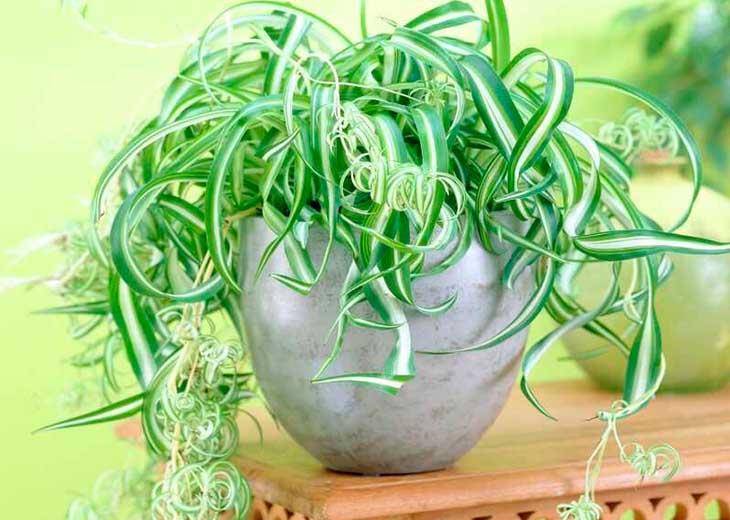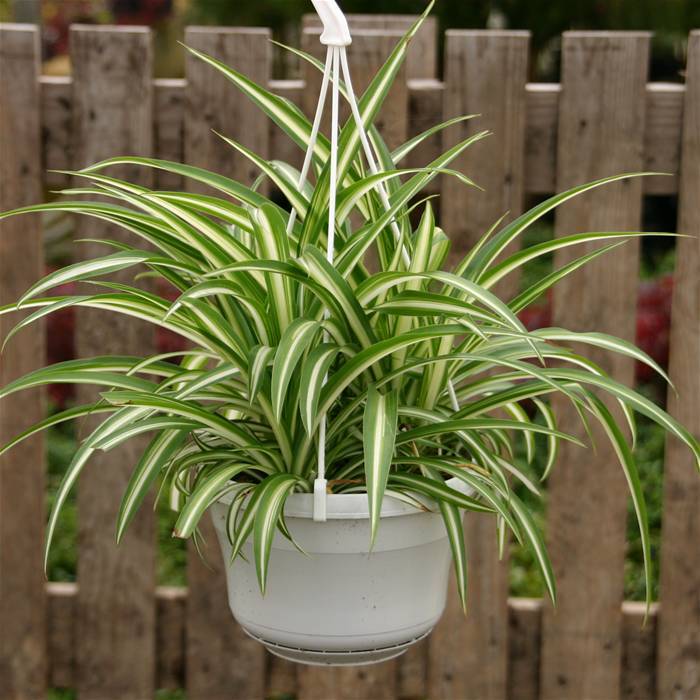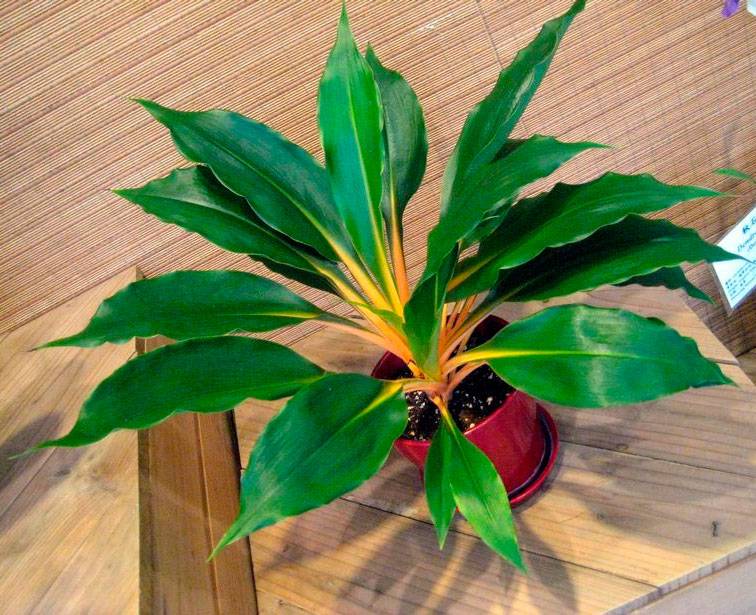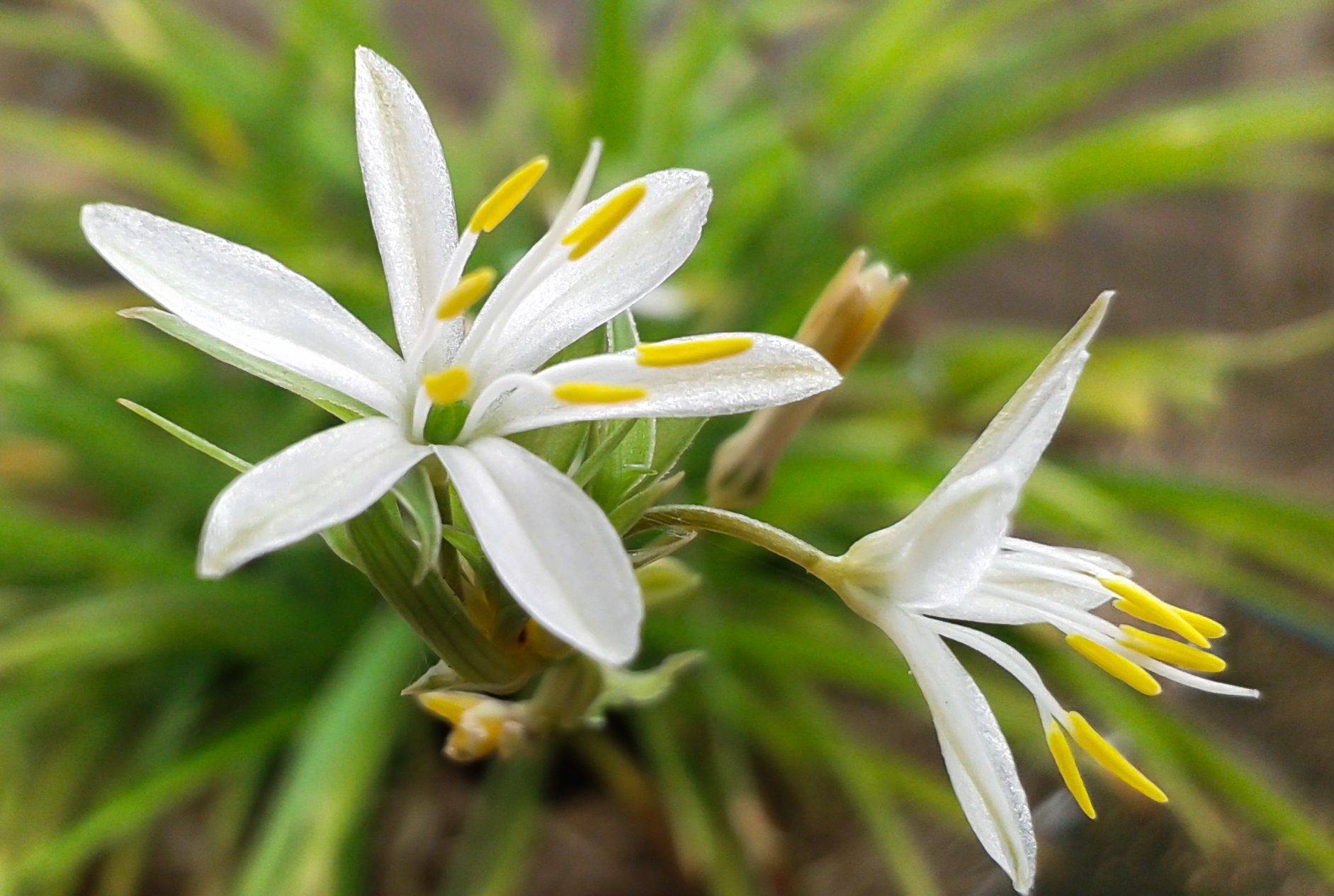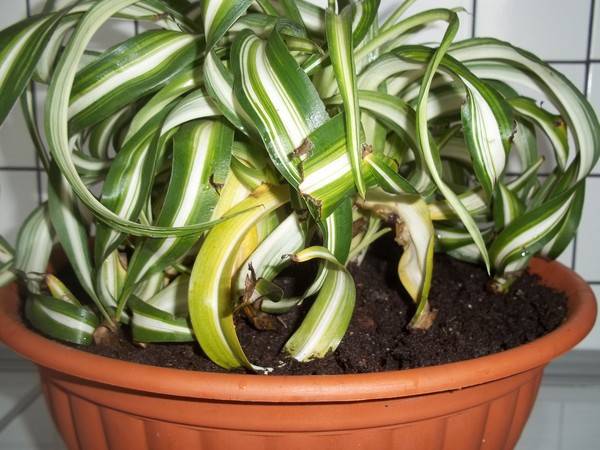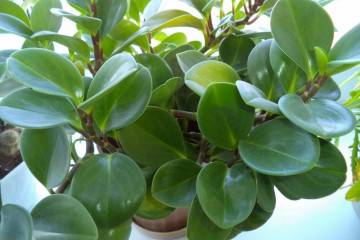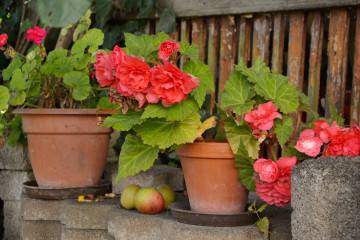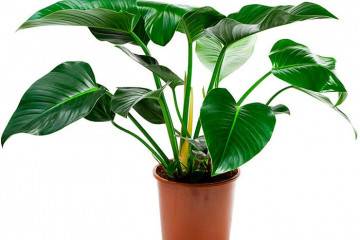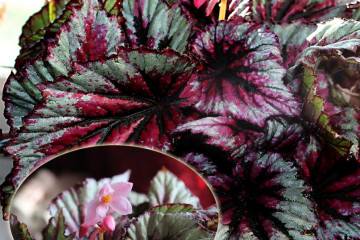Chlorophytum Curly - home care
Content:
The homeland of the evergreen perennial that adorns many homes is the tropical regions of South Africa. The genus Chlorophytum of the asparagus family includes slightly less than 200 plant species. Chlorophytum curly stands out among its fellows with high decorativeness and ease of care.
Common varieties
There are few common varieties of chlorophytum. The most common ones are those described below.
Chlorophytum Crested
Narrow long leaves are collected in a rosette with a diameter of up to 50 cm. During flowering, it gives arrows, crowned with small white flowers. At the end of flowering, daughter rosettes of leaves appear on the arrows, with the help of which vegetative propagation occurs.
A number of varieties have been bred within this species:
- Vitattum is a thin white stripe in the center of dark green leaves.
- Variegata are light leaves with a silvery edging.
- Laxum - the leaves are variegated, along the edge there is a light stripe, the basket is fan-shaped.
Ocean - a variety of leaf color similar to Laxum, the leaves are collected in a spiral rosette, often straightened.
Chlorophytum Curly (Bonnie)
It has a compact bush, leaf plates, with a wide white stripe in the center, curls and curls, which gives the plant a high decorative effect.
Chlorophytum Cape
Light green leaves without stripes are collected in a dense rosette. Mustacheless look. Propagated by dividing the bush. Large white flowers.
Chlorophytum winged (orange)
The leaves of this variety are wider than those of the others. The dark green leaf plate is contrastingly shaded with an orange petiole and vein. The inflorescence is spicate, outwardly similar to the ear.
Beneficial features
Representatives of the Chlorophytum genus are rightfully considered the best living air purifiers. It is scientifically proven that chlorophytum absorbs and detoxifies:
- carbon monoxide,
- acetone,
- ammonia,
- benzene,
- nitrogen oxide,
- formaldehyde,
- pathogens.
Briefly about the history of appearance
The plant was first described at the end of the 18th century. In Europe, an unpretentious plant appeared in the second half of the 19th century and quickly won the love of flower growers.
Features of caring for chlorophytum Curly at home
Chlorophytum Curly is very unpretentious, it is easy to care for it, even a beginner can handle it. Despite this, there are several rules, the observance of which will allow you to grow a beautiful, healthy flower.
Temperature
A visitor from the tropics, chlorophytum does not like low temperatures and drafts. The optimum temperature will be 18-20 ° C.
Lighting
The place where the flower lives should be illuminated by diffused sunlight. Direct light is harmful. It also tolerates strong shading, but may lose its decorative effect.
Watering
In the summer, it needs frequent abundant watering.The soil should always be moist. In winter, the frequency and volume of watering are reduced. Over-watering in winter will cause brown spots at the base of the leaves.
Spraying
The plant will be grateful for periodic spraying and cool showers.
Humidity
Dry air provokes drying of the leaves, they turn pale, wither. Blackened leaf tips are a sure sign of a lack of air humidity.
Priming
The soil for planting Chlorophytum Curly should be loose, breathable, with a neutral pH.
Experienced flower growers advise the following composition of the soil mixture:
- sod land - 2 parts,
- leaf land - 1 part,
- calcined river sand - 1 part,
- leaf humus - 1 part,
- chopped pine bark - 1 part.
Top dressing
Top dressing is required during the active growing season - late spring and summer. The application of complex liquid fertilizers with a high nitrogen content twice a month will compensate for the lack of nutrients and help the green pet to be healthy and beautiful.
Features of care in winter, dormant period
In winter, during the rest period, you need:
- Eliminate feeding.
- Reduce watering frequency.
- Avoid air temperatures below +10 ° C.
When and how it blooms
Blooms from spring to autumn. Hanging arrows appear from the rosette, bearing a loose panicle of small flowers. When flowering ends, daughter rosettes of leaves with air roots appear on the arrows.
Flowering period
Chlorophytums do not have a pronounced period of dormancy and flowering. In favorable conditions, flower stalks appear even in winter. With a large amount of nitrogen in the soil, it can stop blooming, accumulating biomass.
Pruning
Chlorophytum pruning is not required, although it tolerates this procedure easily. Only old leaves that have lost their decorative effect are removed. If there is no purpose for reproduction, then the arrows should be removed after flowering, especially in winter, since the plant spends a lot of energy on them and loses its decorative effect.
How Chlorophytum Curly reproduces
The plant can be propagated vegetatively and using seeds.
Germinating seeds
The seeds can be purchased from a specialist store. It is better to propagate by seeds in early spring. For the fastest pecking, the seeds must be soaked for 24 hours. The prepared seeds are sown in soil containing sand and peat, covered with glass or a thick film. The greenhouse should be located in a room with a temperature of +22 - +25 ° C.
Air layering
Babies that appear on peduncles root perfectly. Reproduction in this way can be carried out in two ways:
- The babies are cut and rooted in the water.
- The babies are rooted in the soil without cutting off from the mother plant.
This method allows you to quickly obtain many individual plants.
Dividing the bush
A plant more than four years old is divided into parts during transplantation. Even a part of a bush with a single bud and a small root will grow successfully.
Transfer
A young plant is transplanted annually, over 4 years old - every 2-3 years, in the spring. Regular transplanting replaces feeding.
Drainage is laid at the bottom of the pot. The roots of the plant to be transplanted are freed from the soil, diseased, rotten, old roots are removed. The flower then takes root in a new substrate and is watered abundantly.
Possible growing problems and diseases
Improper home care, even in an unassuming curly chlorophytum, can provoke attacks of diseases and pests. Some of their signs are discussed below.
Drops buds and leaves
The reason may be dry air, decay of roots, nematodes.
Leaves turn pale
Pale leaves indicate a lack of nitrogen and sunlight. The plant needs to be fed and placed in a brighter place.
The tips of the leaves dry
Dry, dark brown leaf tips indicate low air humidity. Regular spraying will help to stop the appearance of dry areas. The damaged leaves must be removed.
The lower leaves fall
The lower leaves gradually die off in all herbaceous plants. If more falls off than new ones grow, and the plant is pretty bald, then you need to take measures:
- Transplant chlorophytum into new soil.
- Choose a more suitable location. Transfer from the shadow to the light. If the light is too bright, protect from rays.
- Do not forget about watering and regular spraying.
Pests
Chlorophytums are rarely attacked by parasites. The grower may encounter aphids, spider mites, thrips, nematodes.
Plants affected by a nematode are practically not curable, so it will be correct to leave the baby for rooting and dispose of the plant. The pot must be disinfected.
Other problems
The appearance of yellow leaves indicates that the plant is flooded. Stop watering for a while. In especially severe cases, transplant the flower.
Signs and superstitions
It is believed that the green fountain of chlorophytum relieves depression, absorbs negative energy, helps single people find a mate, and family - to maintain tenderness of feelings.
Chlorophytum Bonnie will decorate your apartment, office, make the atmosphere clean and healthy. At the same time, the flower does not require special care and excessive attention, and its bright greenery and a fountain of arrows will delight you all year round.
